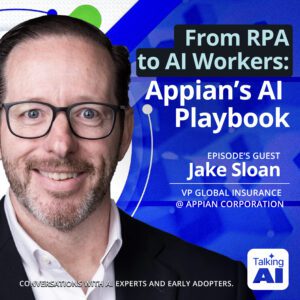You’re here for an introductory guide to Generative AI and we want to get you the helpful information as soon as possible.
So we won’t keep you from that with a long-winded introduction. Instead, we’ll get right into it.
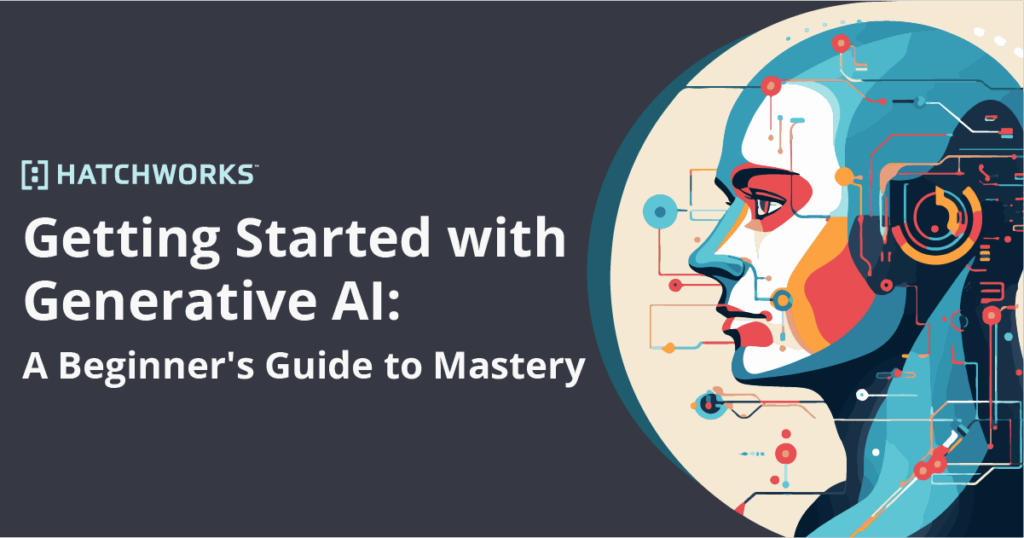
How to use this guide:
You can read the guide from start to finish or jump to the sections that will best fill your knowledge gaps.
- What is Generative AI?
- Exploring Large Language Models (LLMs) and Their Role in Gen AI
- Practical Applications of Generative AI in Business
What is Generative AI?
👀 TL;DR: Generative AI is a type of artificial intelligence that creates new content, such as text, images, or music, by learning from existing data. It uses algorithms to generate outputs that mimic the style or characteristics of the data it was trained on, enabling it to produce novel and original content.
🗣️ Tell me more:
Most AI technologies are great at learning from existing data, understanding patterns, and making predictions based on that. Generative AI goes a step further. It’s able to create new content, be it an image, video, a human voice, text, or even a piece of music.
Here’s how it works:
- Learning: First, it learns by looking at lots of examples. For instance, if it’s going to write stories, it reads many stories first. If it’s going to write code, it reads lines upon lines of code. This is all based on machine learning models, particularly generative models like Generative Pre-trained Transformers (GPTs) or certain types of neural networks.
ChatGPT was trained using a diverse dataset compiled from a wide range of sources available on the internet, including books, websites, and other texts. That’s why it’s able to mimic human logic and reasoning so well—it can draw connections in the same way humans have demonstrated for thousands of years.
- Understanding Patterns: Then, it starts to understand patterns. Like in stories, it learns how characters usually act, or in pictures, it knows what trees usually look like.
- Creating: Finally, when you ask it to make something, it uses what it learned to put together new ideas. If you ask for a story about a space adventure, it combines what it knows about space, adventures, and storytelling to write a new story.
In simple terms, Generative AI takes the information it has learned (its training data), finds patterns and rules in that information, and then uses those patterns to make new things that are similar but not exactly the same as what it has seen before.
Because of this, it is unlike any other AI that has existed so far.
Just how different is Generative AI from other artificial intelligence?
Find out by watching the clip below from our podcast where Nikolaos Vasiloglou, Vice President of Research ML at RelationalAI explains that difference and the evolution of the AI industry.
Watch, listen, or read the full podcast interview here.
Examples of Generative AI outputs include:
- Using ChatGPT to outline a blog article (and yes, it helped us with this one!)
- Prompting MidJourney to create a custom image
- Having Copilot finish a software code sequence or check it for bugs



Why It Matters in 2024
Two or three years ago only a subset of people were talking or thinking about Generative AI.
Most of us were unaware it existed and those who were didn’t realize the impact it would have almost overnight.
It was the introduction of platforms like ChatGPT (launched in November 2022) that put the capabilities of Generative AI into the spotlight.
And when it launched people across industries began to experiment en masse. In fact, ChatGPT reached an impressive 100 million monthly active users within 2 months of launch.
Driving this adoption was curiosity:
- Was the tool really as good as everyone said?
- Could it help me become more productive?
- Could it help my business become more efficient?
- Will my skill set be made redundant?
Those were all questions spattered across LinkedIn and discussed over company calls within the last year or more.
Now that we’re in 2024, the initial fear around Generative AI has largely subsided. The excitement and curiosity, however, remain. And while we all started out as beginners in 2022, we’re starting to see some become masters—masters at prompts, masters at building new tools, masters at finding new use cases.
Which means you must too… or risk getting left behind by your industry.
Gartner’s October 2023 report shared that over half of the 1,400+ organizations they surveyed have ramped up their investment in Generative AI. So we expect adoption and mastery of Generative AI will become a prerequisite for work before long.
In the meantime, it’s proving an advantage. AI has been shown to increase employee productivity by up to 66%.
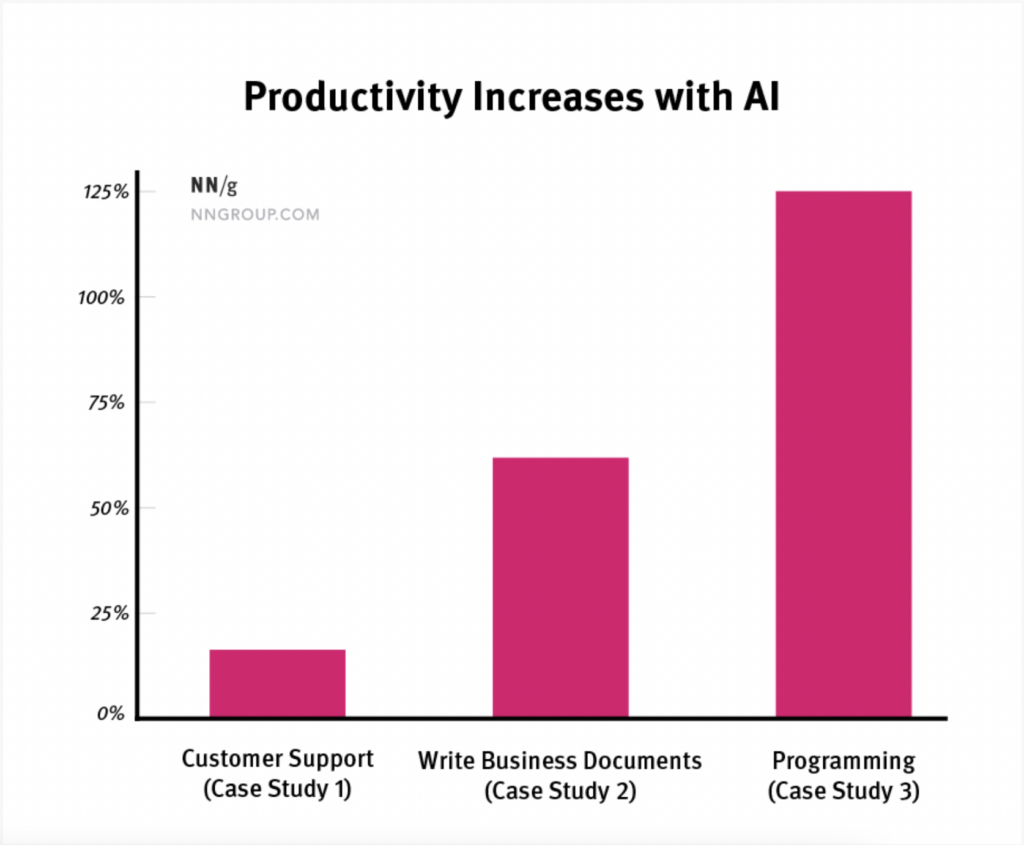
Exploring Large Language Models (LLMs) and Their Role in Gen AI
👀 TL;DR: LLMs use natural language processing (NLP) to understand and create human-like text and language, including code. This significantly enhances Generative AI’s ability to generate original, contextually relevant content.
What Are Large Language Models?
At the heart of some of the most advanced generative AI tools lies a technology known as LLMs.
These are sophisticated programs that use NLP to understand, interpret, and generate human language.
Key characteristics of LLMs include their vast size, often built on billions of parameters, and their ability to learn from a wide range of data sources.
Those data sources include:
- Text
- Images
- Video
- Sound
This learning allows them to generate new content.
LLM’s Role in Generative AI
LLMs are the driving force behind many generative models. In fact, you can consider Gen AI as a subset of LLMs.
Their sophisticated understanding of language nuances allows Generative AI to create content that is not only new but also contextually relevant and coherent.
This capability is transforming how we interact with AI, making it a collaborative partner in creative and analytical tasks.
The type of repetitive tasks that it can assist with will evolve over time, especially as it learns from different languages. This isn’t limited to spoken languages either.
Rather, they’ll include languages such as:
- Art
- Dance
- Emojis
- Symbols
- Morse code
- Genetic code
- Hieroglyphics
- Cryptography
- Sign language
- Body language
- Musical notation
- Code generation
- Chemical signaling
- Animal communication
- Haptic communications
- Traffic signs and signals
- Mathematics
Many of those are already learned and used by LLM’s. So it may be time to widen the scope of how you’ll use Generative AI.
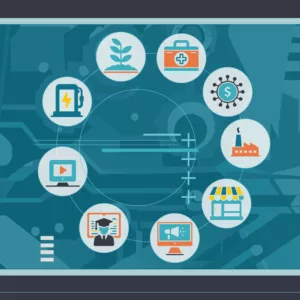 Practical Applications of Generative AI in Business
Practical Applications of Generative AI in Business
Here are a few examples of how businesses across departments are using Generative AI.
Please note that this is far from an exhaustive list of possible applications in business.
Software Development
In software development, Generative AI accelerates the coding process. It can suggest code, identify bugs, refactor or simplify code, and even write simple programs. This not only speeds up development but also enhances code quality, leading to more robust and efficient software solutions.
And that’s just the beginning. We’re about to see software development transform with the assistance of AI. Below is a snippet of a LinkedIn post from Allie K. Miller where she shares the ways she sees AI helping developers now and in the future.
At HatchWorks, we’re constantly exploring how AI can increase our productivity and efficiency. Those learnings and applications are all to help our clients get a higher value, better, more cost-effective software development service.
📚 Further reading: Harnessing Generative AI Tools for Modern Software Development.
See how HatchWorks is leading the way in AI-powered software development.
Our Generative-Driven Development™ leverages cutting-edge AI to optimize your software projects.
Discover the difference on our page.
Marketing
Content Creation and Optimization
Generative AI can be used as an assistant to create high-quality written content, from marketing copy to technical documents.
This technology can optimize existing content for better engagement, ensuring businesses maintain a compelling online presence. For example, AI can analyze web page performance and suggest improvements, making content more appealing to target audiences.
It can also assist in ideation and content creation itself.
And it’s not limited to text-based content. There are tools enhancing video and image creation that can be used in marketing campaigns and other departments as well.
Data Analysis
Automating Data Interpretation
Imagine having thousands of rows of customer feedback data. Sorting through this manually to find common themes and sentiments can be daunting and time-consuming.
Here’s where ChatGPT comes in. By feeding this data into ChatGPT, businesses can quickly get a summary of key customer sentiments, common issues raised, and even suggestions for improvement.
This process, which could take days if done manually, can be accomplished in minutes, allowing companies to react more swiftly to customer needs.
Hear from Matt Paige, one of our resident AI experts and host of the Built Right Podcast talk through a unique use case where ChatGPT is your data scientist:
Product/Design
Image and Video Generation
Another significant application is in image generation. Businesses are using Generative AI to create unique graphics, product designs, and even virtual models.
This technology streamlines the design process, saving time and resources while providing a platform for creativity. For instance, an AI can generate multiple design prototypes, allowing businesses to explore various visual options quickly.
Want to learn more about using AI in Product? There’s a new newsletter called Product Prompts which shares use cases and educates readers on how to leverage AI in the world of Product.
Customer Experience & Support
Personalized Customer Experiences
Generative AI is also instrumental in personalizing customer experiences. By analyzing customer data, AI can create tailored recommendations, enhancing customer engagement and satisfaction.
For instance, e-commerce sites use AI to suggest products based on browsing history, significantly improving the shopping experience.
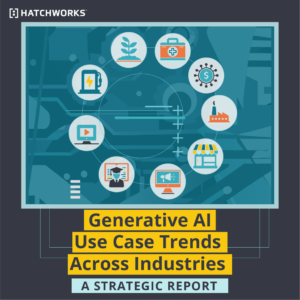
Are you looking for more in-depth insights into how Generative AI is shaping various industries?
Be sure to check out our report, Generative AI Use Case Trends Across Industries.
It shows more use cases across different industries like retail, manufacturing, education, agriculture, and more.
Getting Started with Generative AI: First Steps
Choosing the Right Platform(s)
Knowing what Generative AI platforms are right for depends on what you want to accomplish with them and if you want free or paid versions.
For beginners, user-friendly and widely supported options are ideal.
Popular choices include:
- OpenAI’s GPT-3 or GPT-4 for language-based tasks, data analysis, and coding
- DALL-E and Midjourney for image generation
- TensorFlow or PyTorch for more technical, customizable AI projects
- Llama by Meta for versatile language processing (Ideal for chatbots, virtual assistants, and other interactive applications)
- Bloom by Hugging Face for accessible AI research and development
- Falcon LLM by Technology for domain-specific solutions (can create AI applications tailored to specific industries like finance or healthcare)
Each platform has its strengths: ChatGPT excels in text generation, DALL-E in creating visual content, while TensorFlow and PyTorch offer flexibility for diverse AI applications. The last three are open source models that businesses can use to build their own Generative AI applications, hyper-specific to their product, service, or internal needs.
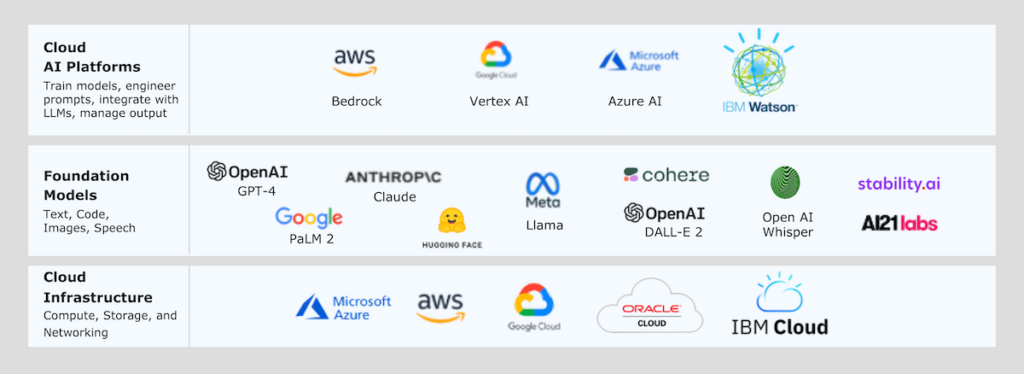
Some tools, like ChatGPT, also have plug-ins you can use to enhance its capabilities.
Beginners should start with a specific goal in mind, like text generation or image creation, and choose a platform that best suits that purpose.
Setting Up Your First Project
Once you’ve chosen your platform, setting up your first Generative AI project involves a few basic steps. If you’re using a cloud-based platform like ChatGPT, it usually starts with creating an account and exploring the API (Application Programming Interface).
To ensure a smooth start:
- Follow Tutorials: Utilize the wealth of online tutorials and documentation available for your chosen platform. These resources often provide step-by-step guidance.
- Start Small: Begin with a simple project to familiarize yourself with the tool’s capabilities and limitations.
Work with an Expert: Leverage the experience of someone who is steps ahead of you. At HatchWorks we’re opening up our expertise in AI to others in business through specialized training programs. - Join Communities: Online forums and communities can be invaluable for getting help, sharing ideas, and staying updated on the latest in Generative AI.
Tips for Leveraging Generative AI
Start with Curiosity
For beginners, the best approach is to start with a sense of curiosity.
Experiment with different prompts. Explore various outputs and observe how slight changes in your input can lead to different results.
This explorative process is key to understanding the capabilities and limits of Generative AI.
Learn How to Prompt
You’ll need to upskill in prompting. There are ways you can manipulate prompts to get better outputs and it doesn’t always come naturally to us humans.
There’s no need to put please and thank you but there are also nuances around the type of phrasing and language you use with the Gen AIs that can help them understand what you’re asking for.
Prompting in Generative AI involves giving an AI model a specific instruction or input (the prompt), which guides the AI in generating a relevant and targeted response or output, much like asking a question or setting a task for it to complete.
Utilize Templates and Examples
Many platforms provide templates or example prompts to get you started. These can serve as a foundation for your projects, allowing you to learn by modifying and building upon existing examples. It’s a great way to understand how effective prompts are structured.
Embrace Trial and Error
Don’t be afraid to make mistakes. Generative AI is a field where trial and error can be particularly enlightening. Each attempt, whether successful or not, provides valuable learning opportunities. This approach encourages creative thinking and helps you gain practical experience with the technology.
Collaborate with the AI
Think of Generative AI as a collaborative partner. Pose challenges to the AI, use it to brainstorm ideas, or refine concepts. This collaborative approach can lead to innovative solutions and creative ideas that might not be immediately obvious.
Continuously Learn and Adapt
The field of Generative AI is rapidly evolving. Stay informed about the latest developments, tools, and techniques. Continuous learning is crucial for leveraging the full potential of these technologies in your projects.Building Your Gen AI Skills: Tutorials and Resources
Once you begin to experiment with Generative AI, you can turn your attention to mastering it.
A lot of ‘mastery’ will come from experimenting but you can also look to people and businesses who are a few—or several—steps ahead of you in their AI journey.
Many of them are sharing their learnings, tips, and tricks publicly through courses, free educational content, and communities and forums.
Online Tutorials and Courses
Beginners might start with introductory courses that cover fundamental concepts, while more experienced learners could look for specialized courses in areas like neural networks or natural language processing.
It’s also beneficial to choose courses that offer hands-on projects, as they provide an opportunity to apply what you’ve learned.
Communities and Forums
Participating in forums and communities allows you to share knowledge, get feedback, and stay updated with the latest trends and challenges in the field.
Websites like Stack Overflow, GitHub, and Reddit have active AI communities where both beginners and experts converge to discuss ideas and solve problems.
Communities dedicated to specific platforms like OpenAI’s GPT or TensorFlow also exist, offering a wealth of resources and support specific to those technologies.
Engaging in these communities can provide practical tips, inspire new project ideas, generate insights and connect you with potential collaborators.
Ask around your network and look for leaders in your industry. What communities are they involved in or recommending to you?
If you struggle to find one, why not start your own?
Advanced Techniques and Tools
The more you use Generative AI, the more you’ll want to experiment and the better you’ll become. At this stage, you’ll want to explore advanced techniques, tools, and custom GPTs.
Here’s an intro to what those are and how they can be used.
Exploring Advanced Features
Advanced features often include fine-tuning models to specific needs, integrating AI with other technologies like IoT or blockchain, and exploring sophisticated natural language understanding and generation techniques.
These features allow for the creation of more nuanced and tailored AI solutions, suitable for a range of specialized applications.
Tools to Enhance Efficiency
For advanced users, a variety of software and tools are available that can significantly enhance efficiency and effectiveness in Generative AI projects.
Tools like Jupyter Notebooks for interactive coding, advanced APIs from AI providers for customized model training, and platforms like Hugging Face allow for deeper experimentation and development.
These tools provide advanced functionalities such as model hosting, fine-tuning, and collaborative features that can streamline the development process and enable more sophisticated project outcomes.
Use Custom GPTs
Custom GPTs allow you to create AI agents with set, specific personas you can return to again and again. They’ll follow custom instructions built around the context of the tasks, the process they should follow, and rules you want to set among other specifications.
They also can be set to a custom knowledge base by uploading files and essentially creating the ‘brain’ of your GPT model.
This is the next step of using Chat GPT. So rather than turning to the generic GPT 3 or 4, you can rely on your own trained model.
Navigating Challenges and Ethics in Generative AI
Common Challenges for Beginners
As beginners dive into the world of Generative AI, they often encounter several challenges. One major hurdle is the technical complexity.
The initial setup, understanding AI models, and learning to use different platforms can be daunting. Overcoming this requires patience and persistence. Beginners are advised to start with user-friendly platforms and gradually progress to more complex tools.
Online tutorials and community support can significantly ease this learning process.
Another challenge is the time investment required to become proficient. Generative AI is a vast field, and mastering it doesn’t happen overnight.
Setting realistic expectations and dedicating consistent time to learning and experimenting is crucial.
Ethical Considerations
Ethics play a crucial role in the responsible use of Generative AI. And the number of AI-related incidents and controversies has surged, increasing 26x since 2012.
One of the primary concerns is the potential for misuse, such as creating misleading or inaccurate information, or infringing on intellectual property rights.
It’s important for us as users to understand these ethical implications and commit to using AI in a way that is honest, respectful, and lawful.
Another aspect to consider is bias in AI models. AI systems learn from data, and if that data contains biases, the AI’s model’s performance and output will likely reflect those biases.
For example, if you ask Gen AI to create a picture of a primary school teacher, odds are it will create one of a woman. Ask it to create a picture of a doctor and it will probably create a man. These outputs are a representation of human bias in AI form that can unfairly perpetuate stereotypes. And that’s just one example.
Morten Rand-Hendriksen made his LinkedIn network aware of another one:
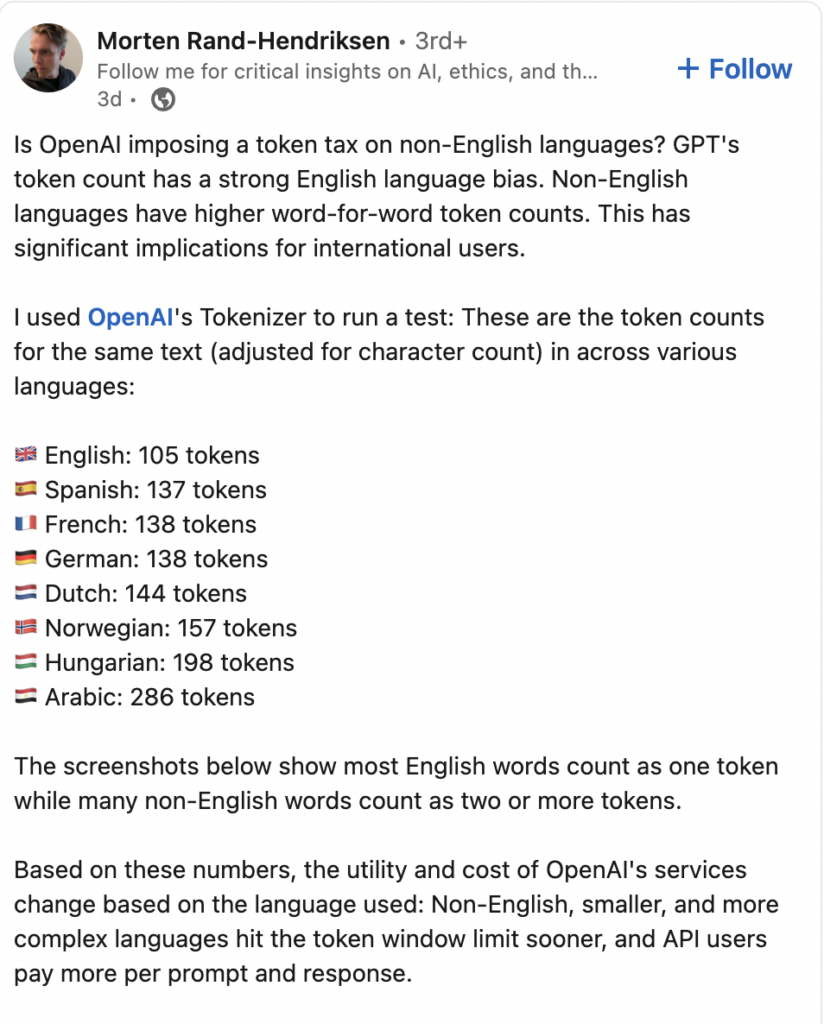
All that’s to say, we must be aware of these ethical considerations and strive to use and develop AI in a manner that promotes fairness and inclusivity.
It’s hard to know just where AI will take us, but in the right hands and with the right use cases we’ll be more likely to create a future where AI advances the best of humanity and not the worst of it.
Preparing for the Future of Generative AI
Staying Updated with Trends
The pace of change in AI technology is swift, and what’s cutting-edge today might become standard tomorrow. To keep up-to-date, engage with a variety of resources like AI-focused news websites, academic journals, and tech blogs.
Subscribing to newsletters from leading AI research labs or following AI experts and influencers on social media can also provide timely insights.
You can sign up to our Talking AI newsletter where we share our learnings around AI and the interviews we hold with AI experts.
Attending webinars, conferences, and workshops dedicated to AI is another effective way to stay up to date with the latest advancements.
Future Prospects and Opportunities
Looking ahead, Generative AI is only going to get better.
We can expect advancements that further blur the lines between AI-generated and human-created content, with AI becoming increasingly adept at fulfilling tasks requiring creativity and complex problem-solving.
This progression will likely open up new career paths in AI development, ethics, and policy-making, as well as job roles in sectors where AI can be applied, like healthcare, entertainment, and finance.
The future also promises more accessible and user-friendly AI tools, enabling people from all walks of life to experiment and create with AI.
And as AI becomes more integrated into our everyday lives, understanding and engaging with this technology will become an essential skill, much like computer literacy today.
Five to ten years from now, you just may find yourself talking about pre-Gen AI with nostalgia and disbelief that we ever went without it. And when you do, you’ll be glad you learned how to use it in the early days of adoption.
Essential AI Skills for Your Team
AI Training for Teams gives your team foundational AI knowledge, preparing you to effectively integrate AI into your business.
